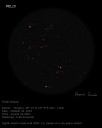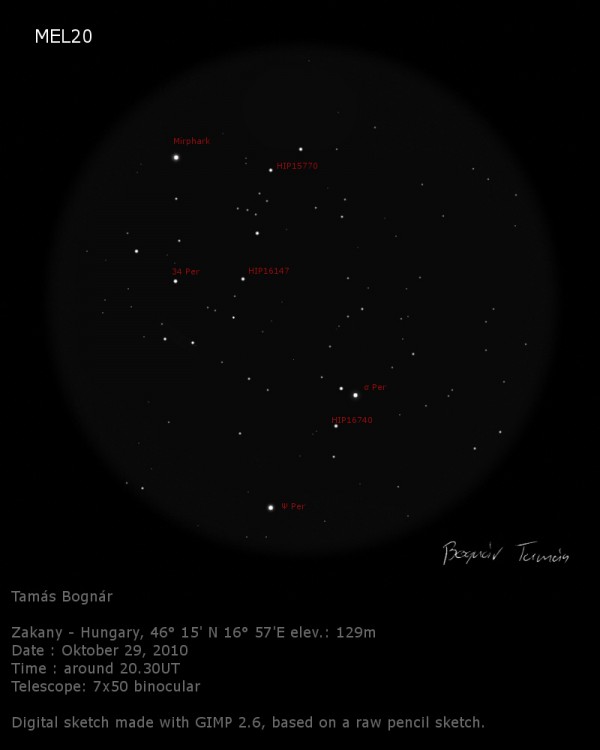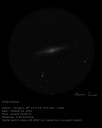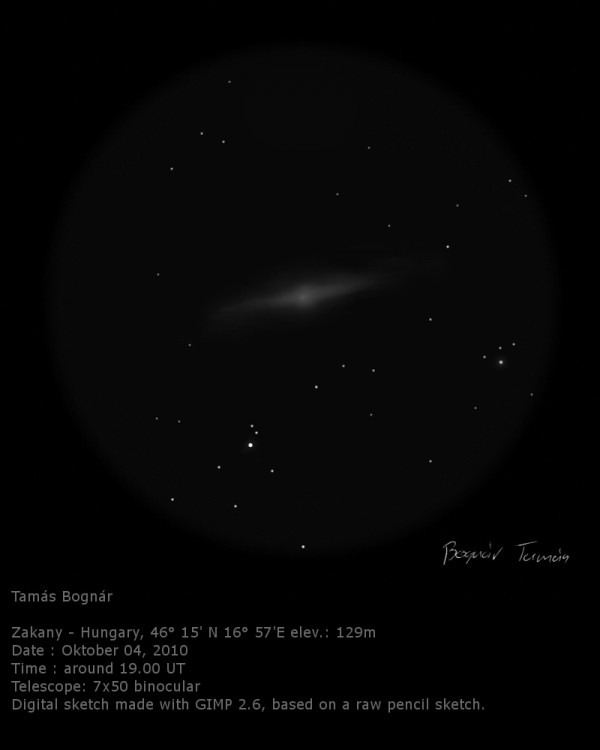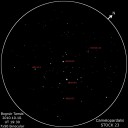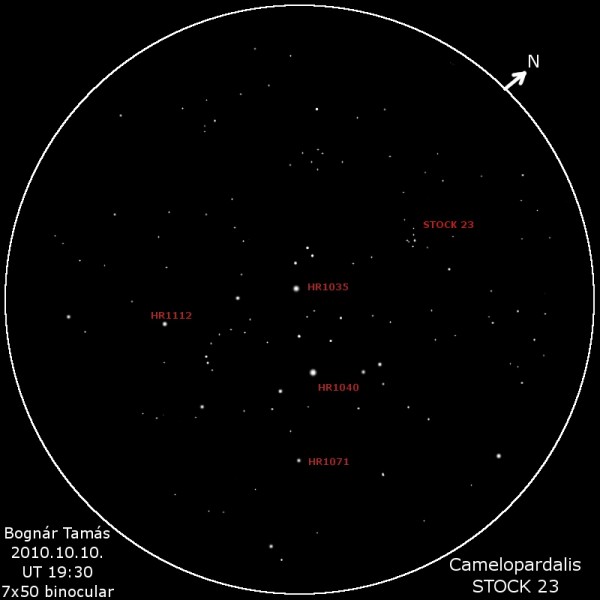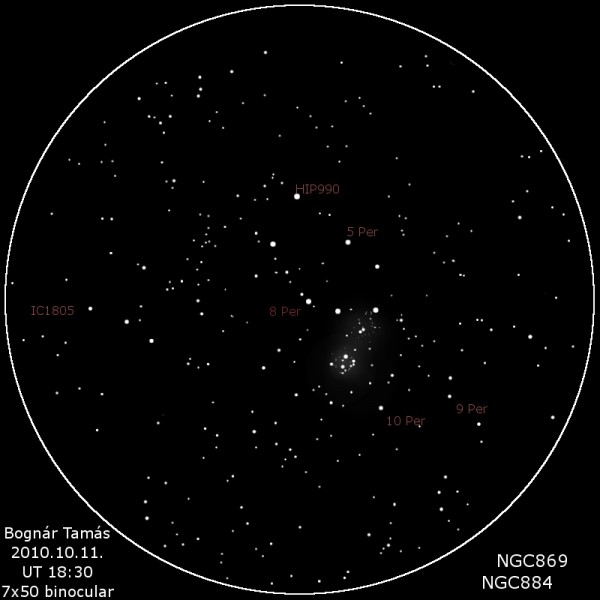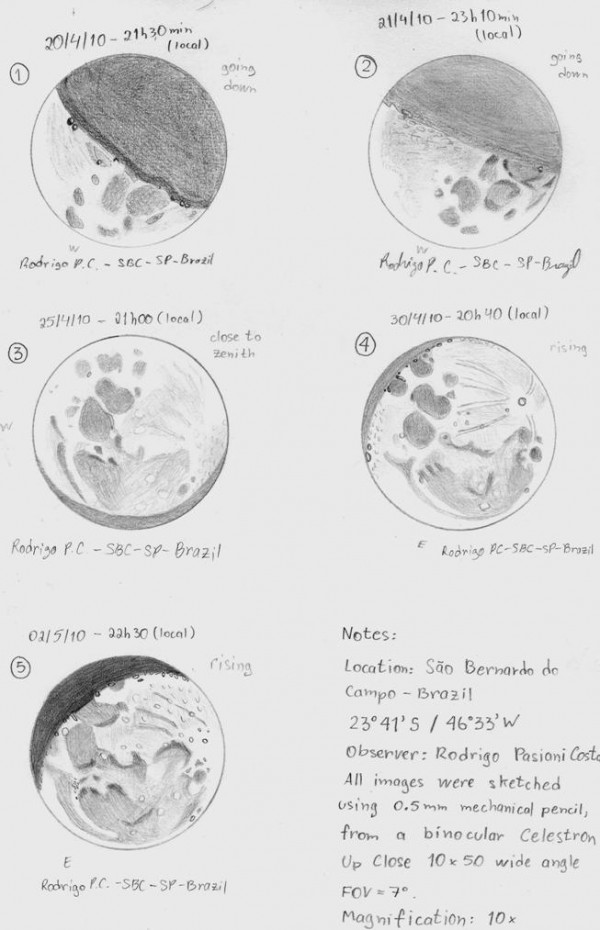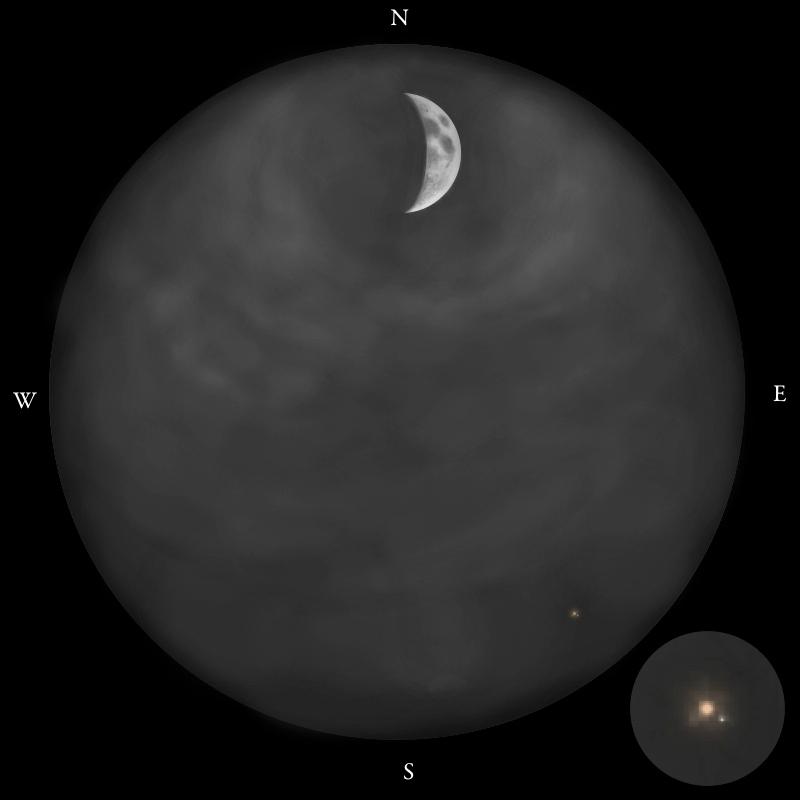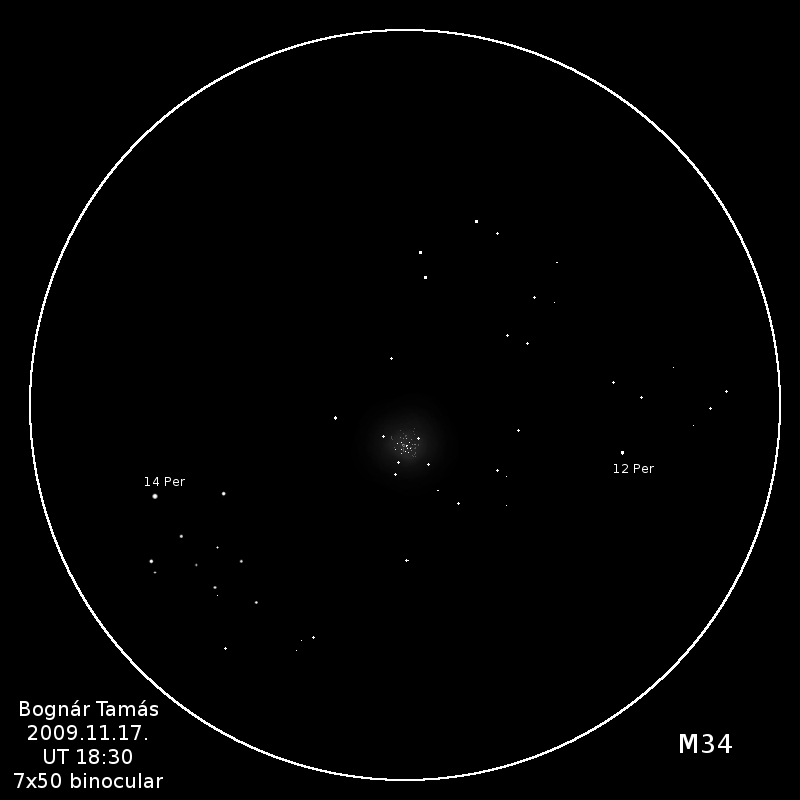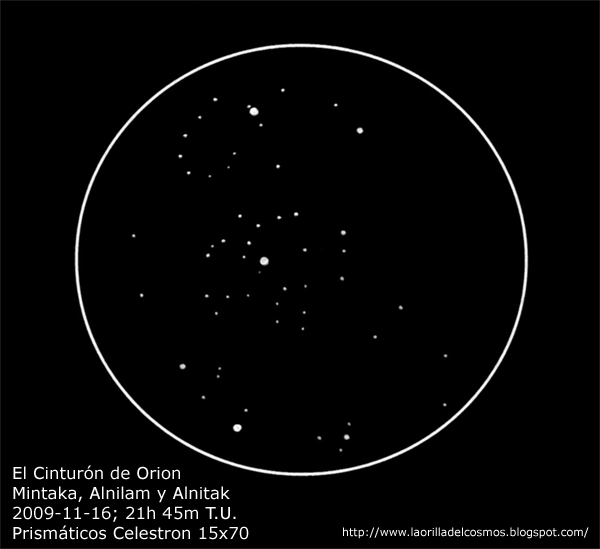
Orions Belt Asterism
Sketch and Details by Oscar Ll. (Almach)
Orion’s Belt with 15×70 binoculars – Sketch by Oscar Ll. (Nickname: almach)
Object Type: Asterism
Location: Barcelona – Spain
2009 November, 16
To start enjoying astronomy is not necessary to have a telescope.
With a few simple binoculars, affordable to everyone, you can see a
number of really interesting objects. Even, there are wonders in the
sky because of its size, it is almost an obligation to observe with
binoculars, not with telescopes.
One of these objects is in the Orion constellation and is known as
Orion’s Belt. This is my sketch, made with a HB2 pencil, on white
paper. Inverted and modified some paremeters with Photoshop Elements.
Great Alnilam, Alnitak and Mintaka with her evanescence companion.
For more details of my observation you can visit my blog:
http://laorilladelcosmos.blogspot.com/2009/11/el-cinturon-de-orion.html
Orion’s Belt (Asterism)
Date and Time: 2009-11-16, 21h 45m UT
Binoculars: Celestron Skymaster 15×70 with tripod.
White paper, HB2 graphite pencil, and scanned and inverted with Photoshop
Seeing: 3/5 (5 the best)
Transparency: Clear. Moderate light pollution.
Location Constellation: Orion
Position: R.A. 05 h 36 min
Dec. -01° 12′
Webmaster’s note: Oscar kindly sent along this text and sketch data. Thank you sir.
